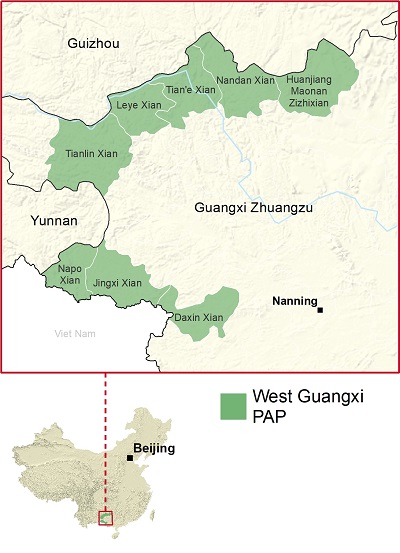West Guangxi Poverty-Alleviation Project
IFAD Asset Request Portlet
Asset Publisher
West Guangxi Poverty-Alleviation Project
This project works to reduce poverty among the rural people living in ten of the poorest countries in the Guangxi Zhuang Autonomous Region.
At least 80 per cent of households in the region are classified as poor, and 10 per cent are considered extremely poor. Ethnic minorities are among the target group.
The population’s average annual income of US$140 is derived from farming tiny plots of land and off-farm activities, such as raising small livestock, processing and marketing. Women are a significant part of the target group and participate in project activities related to water management, microcredit and training.
The project encourages active community involvement through participatory village development plans and helps villagers manage their own natural resources and establish local farming associations.

President's reports
President's reports
Project design reports
Supervision and implementation support documents
Environmental and social impact assessment
Final environmental and social management framework
Interim (mid-term) review report
Resettlement action framework
PCR digest
PCR digest
Project Completion Report Digest
Special study
Project list
Audit and Financial Statements
Project completion report
Co-financiers
Related
Related
40 years of IFAD-China cooperation: Celebrating the past, envisioning the future
IFAD and China are celebrating 40 years of cooperation. Over the last four decades, IFAD has supported China’s development and China has been a key supporter and champion of our work. Here, we look back on 40 years of achievement and look forward to where the next few decades will take us.